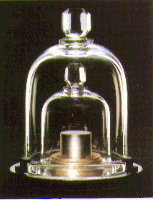Kilogram Redefinition
This could include redefining mass relying on a physical constant — a physical quantity that is universal in nature and constant in time — rather than the less accurate current means, a man-made object. For 30 years scientists across the world have been looking to measure the value of a physical constant as accurately as possible using the existing man-made unit for a kilogram. Once they have achieved this the fixed value of one of these constants can be incorporated it into a new definition of the kilogram.
Research using Planck’s constant, originated at NPL employs an indirect comparison of mechanical and electrical power to measure the kilogram using length, time and quantum mechanical effects.
The National Institute of Standards and Technology (NIST) in the US have managed to measure Planck’s constant using a watt balance machine and record results with uncertainties of 36 parts in a billion. To provide a method with an uncertainty for 1 kg of better than 20 parts in a billion without unresolved discrepancies would be enough to accurately redefine the kilogram if the results are mirrored in other independent experiments.
However, new research from the UK’s National Physical Laboratory (NPL) measuring Planck’s constant using its Mark 2 watt balance show a significant discrepancy with these results. As both watt balances, though different in design, are using the same principle the results should be closer together.
The value of Planck’s constant calculated from the latest NPL results is 6.62607095(44) x 1034 J s [66 x 109]. This value of Planck’s constant differs by 308 nW/W from the result published by NIST in 2007 of 6.62606891(24) x 1034 J s.
This difference is a significant discrepancy. Work on the NPL Mark II watt balance will go on to March 2008 to reduce the uncertainties of the apparatus and either confirm the NPL result or reveal the source of this discrepancy.
Seton Bennett, Deputy Director at the National Physical Laboratory said:
‘Given the discrepancy in these results, further results are required before the CGPM could consider adopting a new definition for the kilogram. A decision to replace the International Prototype with a definition based on Planck’s constant requires substantially more research by laboratories across the world, building on the strong foundations already laid by the National Physical Laboratory and its international partners.’
source: http://www.npl.co.uk/
